1. A complete frame swap can be a big undertaking, but the Scott’s Hotrods ’N Customs chassis takes the guesswork out of it and makes for a smooth transition.
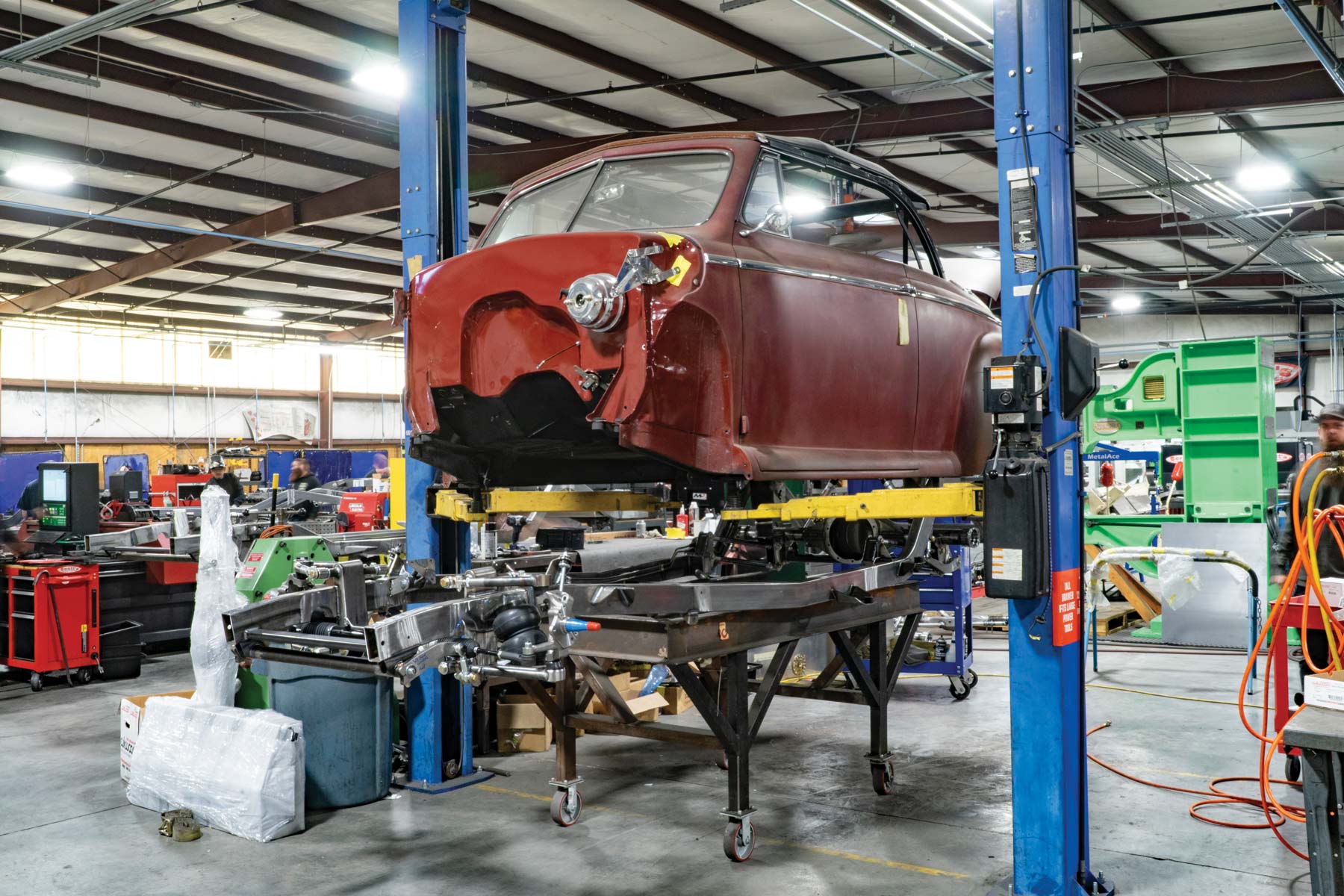
1. A complete frame swap can be a big undertaking, but the Scott’s Hotrods ’N Customs chassis takes the guesswork out of it and makes for a smooth transition.
This ’47 Ford Gets a New Look, Thanks to a Scott’s Hotrods ‘N Customs Chassis
By Tommy Lee Byrd  Photography by Camren Beattie
Photography by Camren Beattie
ot rodding continues to evolve, and it opens the door for many more build options. It’s becoming way more common to order a complete rolling chassis instead of piecemealing a frame and suspension system in your home shop. Back in the day, hot rodders would find a Camaro or Nova front subframe and rearend housing to bring their car into the modern age. While it’s still possible to achieve a smooth ride with the old-school approach, there are obvious advantages to the modern method of using a complete chassis. Scott’s Hotrods ’N Customs, based out of Knoxville, Tennessee, is one of the leading suppliers of custom frame and suspension systems for hot rods, customs, classic trucks, and more.
We recently had the opportunity to follow along with the process of swapping this ’47 Ford convertible onto a new chassis. The original frame had been upgraded with Mustang II front suspension and parallel leaf springs out back. It was a good setup but the stance didn’t provide any “wow” factor. With intentions of sitting the body as low to the ground as possible, the crew at Scott’s Hotrods ’N Customs built a chassis with Ridetech air suspension. The tubular front suspension, rack-and-pinion steering, and four-link rear suspension give this postwar Ford excellent handling capabilities and a smooth ride down the highway.
Although a chassis swap is an extensive process we’re showing you the highlights of the swap, as it went from a dated build to a contemporary showstopper with its patina paintjob, slammed stance, and gray center five-spoke wheels that are stuffed way into the fat fenders. This chassis swap required a little more fabrication than a standard application, so follow along and see the transformation of this ’47 Ford convertible.

2. Our starting point for this project is a ’47 Ford convertible, which had already received the street rod treatment several years ago. At this point, the engine and transmission has been removed and the body is lifted from the frame.

3. You’ll notice the frame has been modified from stock, using Mustang II–style front suspension and parallel leaf springs. The frame also has a modern fuel system installed, but the entire rolling chassis will be replaced with a custom unit from Scott’s Hotrods.

4. With the body in the air we can see that the floorpans are in decent shape, aside from an access hole cut into the trunk area. With plans to make this Ford sit extremely low, the rear section of the floor will need major modifications.
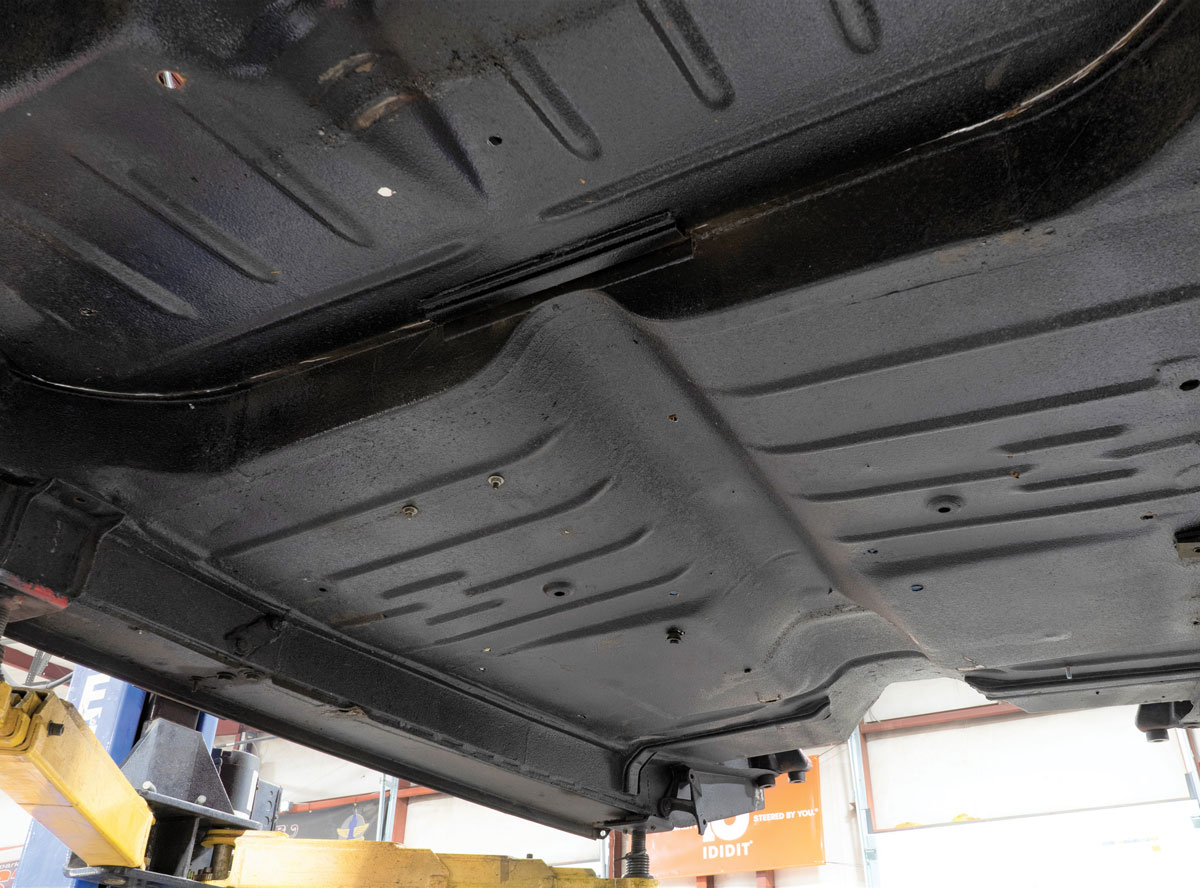
5. The midsection of the floor is also in great shape. Most of the floor will still be used, but Scott’s Hotrods plans to raise the transmission hump and driveshaft tunnel to accommodate the new setup.
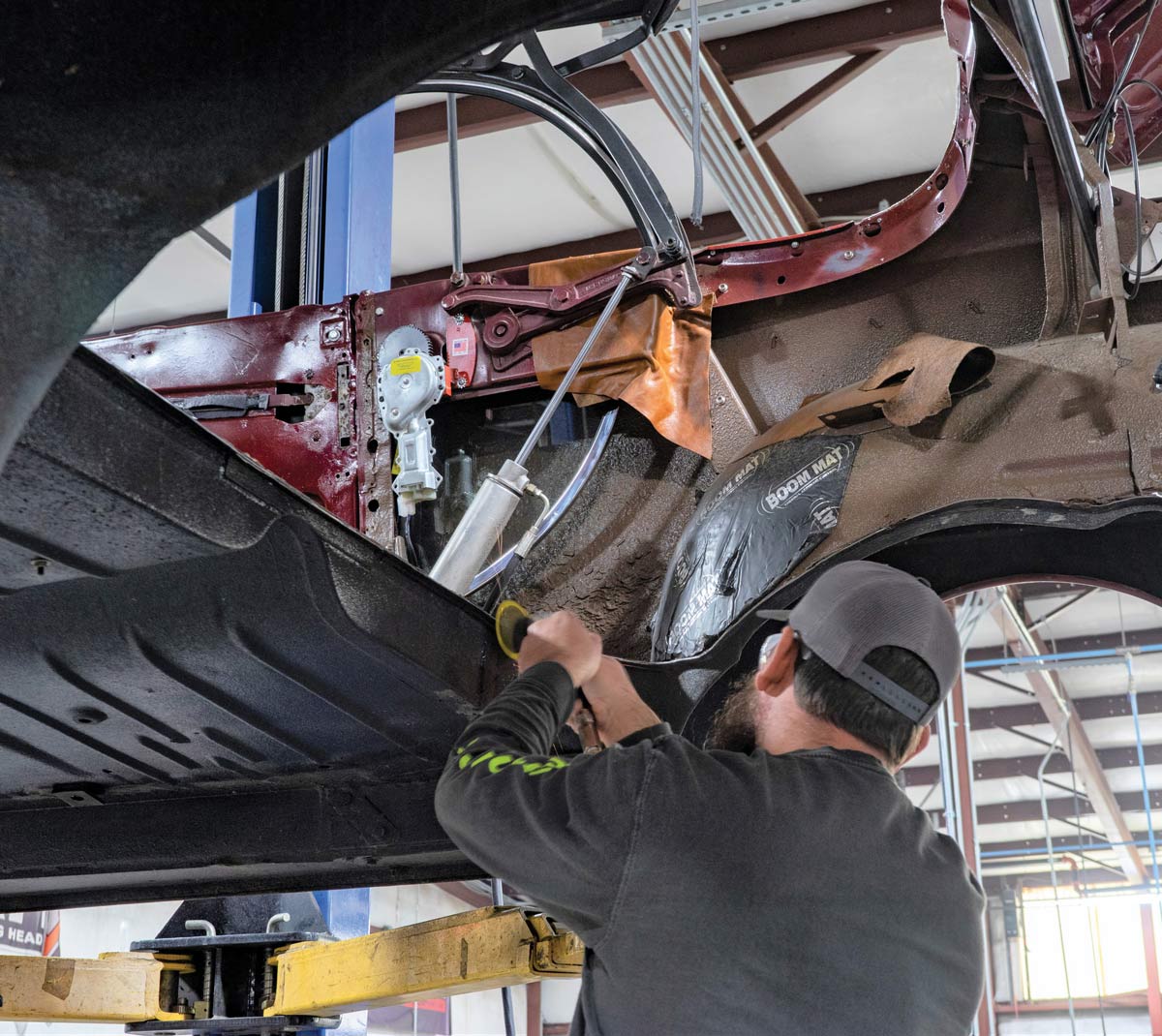
6. Work begins by cutting out the entire rear floor section, starting at the natural seam and working rearward. The team at Scott’s Hotrods dressed up the cuts with an angle grinder.

7. With the initial cuts on the floorpan, the body can be mocked up on the new chassis. A two-post lift and chassis table make easy work of this preliminary marriage of the body and frame.
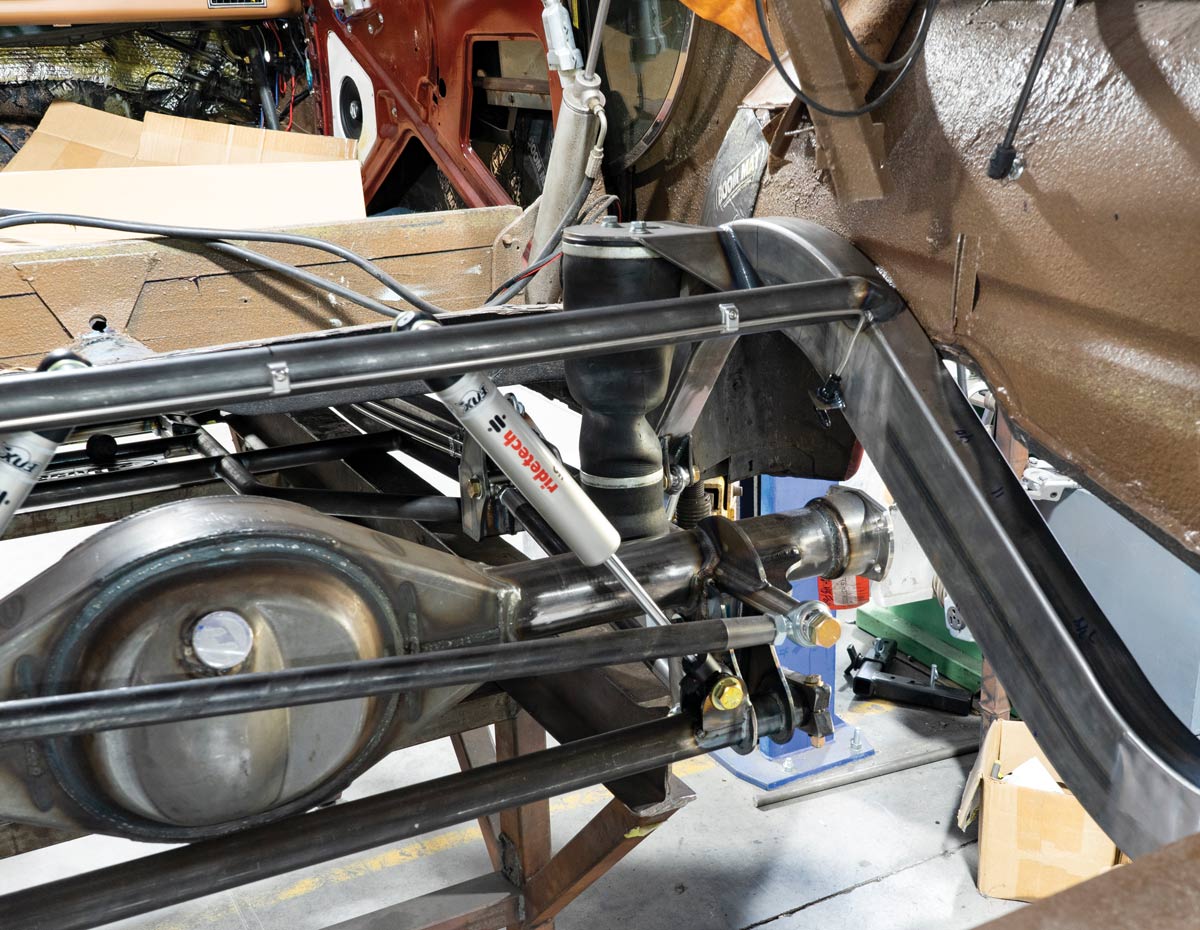
8. Now that the body is resting over the new chassis, you can see the extreme kickup in the rear framerails. This allows for a super-low stance, even when the air suspension is inflated. When aired out, the car should sit on the ground.

9. The four-link bar brackets are positioned higher than the top of the framerail, so notches are cut for proper clearance. The other side is trimmed to match and the body can be lowered onto the mounts.
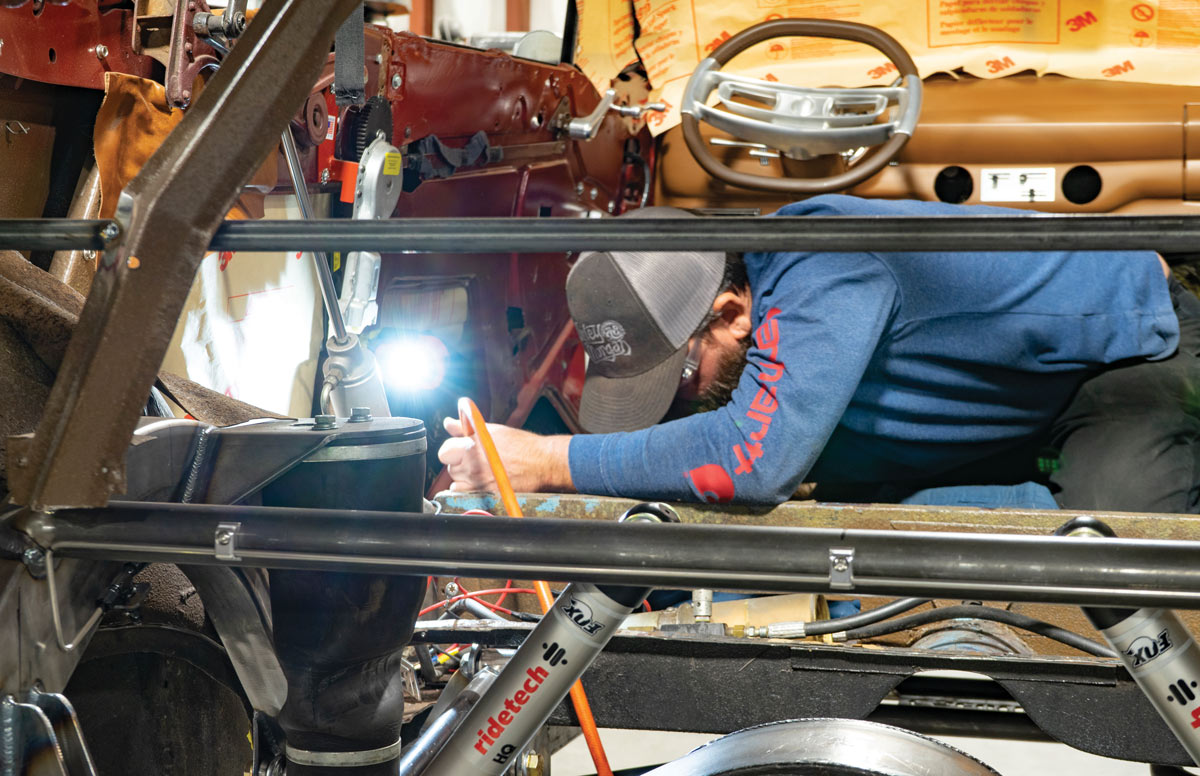
10. The Scott’s Hotrods chassis already has body mounts welded into place, but additional floorpan trimming is needed for the body to rest comfortably on the mounts.
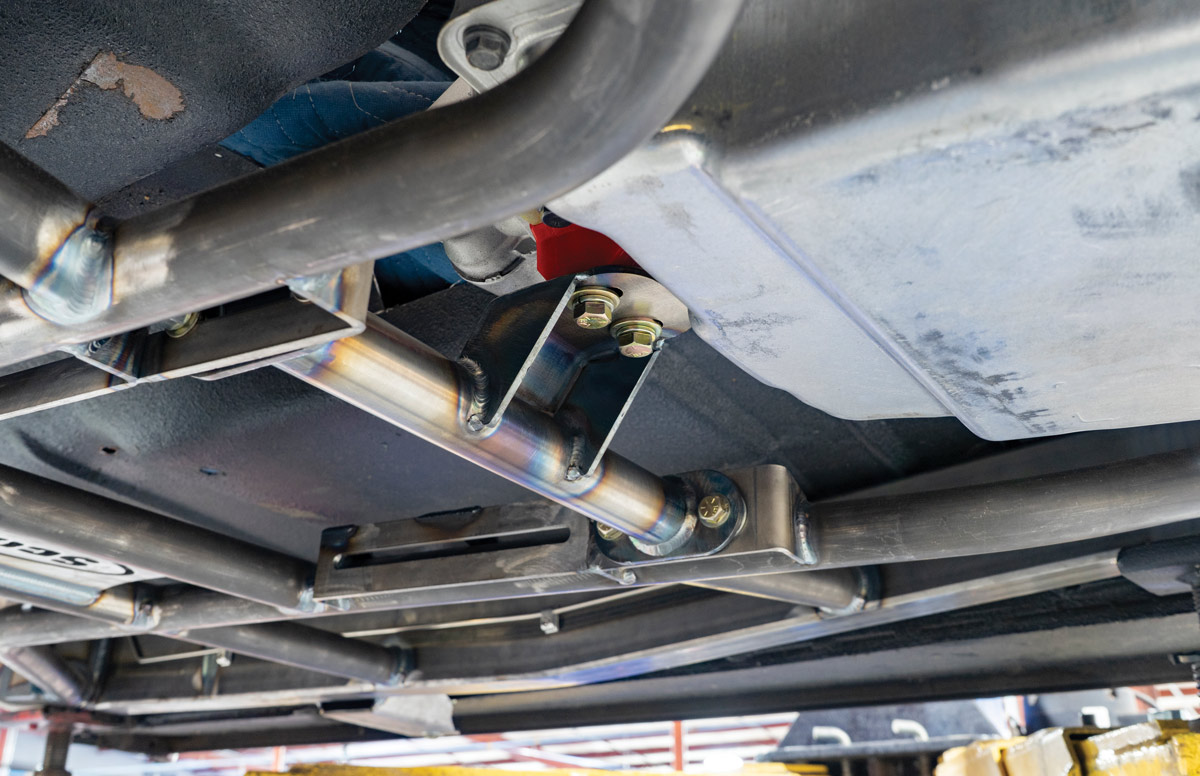
11. Underneath, we can see Scott’s Hotrods’ modular transmission crossmember. It attaches to the frame with Grade 8 hardware. With the engine and transmission mocked up, the crew can determine the proper cuts for transmission tunnel clearance.

12. Once the body is bolted to the frame, items like the shifter linkage can be addressed. It’s also a good idea to at least mock up the transmission cooler lines as you prepare to fabricate a new transmission tunnel.

13. Because of the extremely low stance, the tunnel had to be raised for adequate clearance. Scott’s Hotrods fabricated the steel tunnel and welded it to the original floorpan.

14. Before the rear section of the floor can be fabricated, the custom gas tank is installed. Scott’s Hotrods offers this tank, which is a perfect fit for its chassis systems.
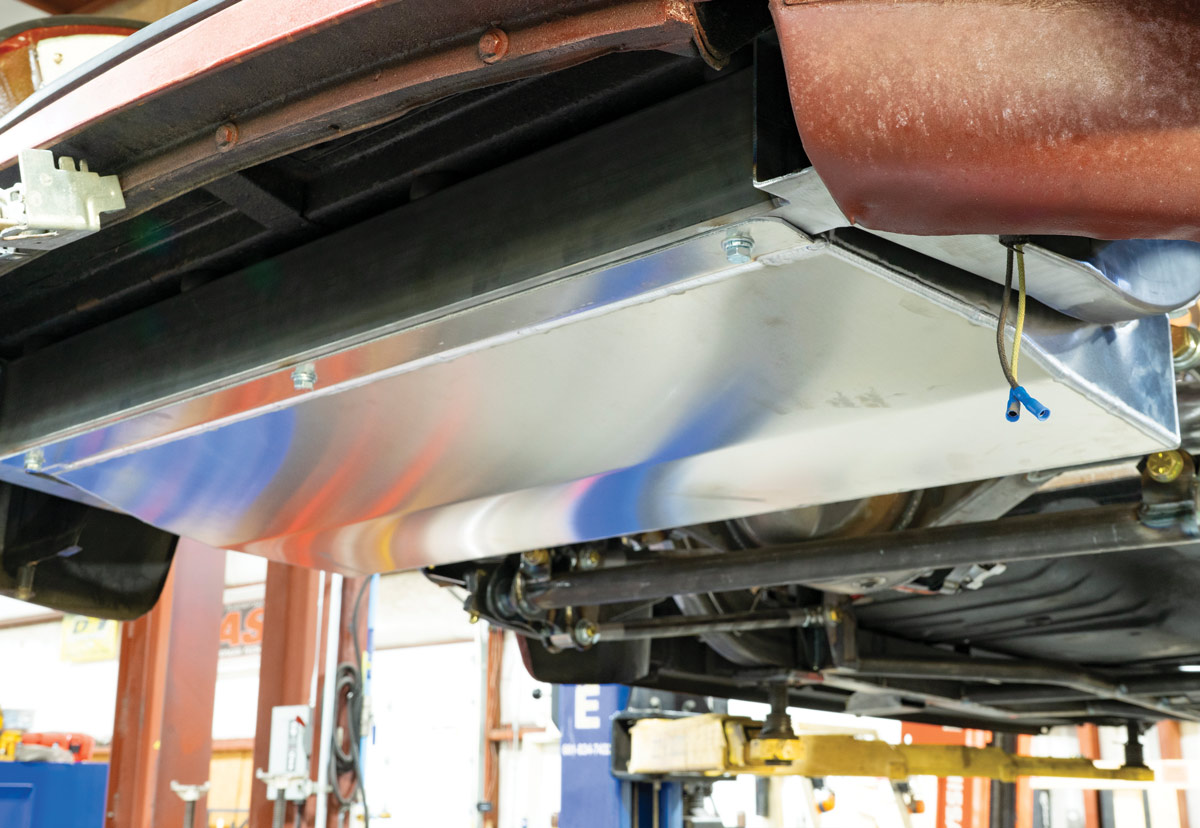
15. As you can see, the gas tank is very shallow, providing plenty of ground clearance while also keeping a flat floor in the trunk area. The tank bolts directly into the custom chassis.
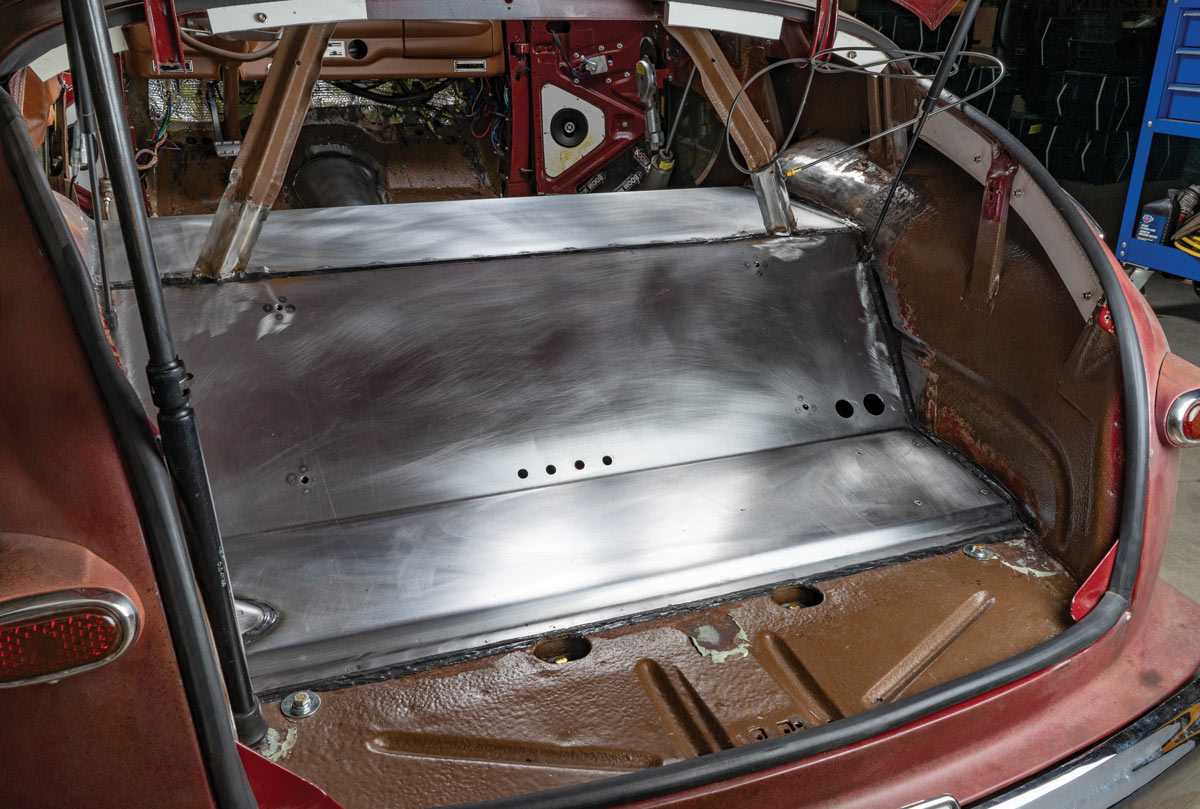
16. A custom rear floor section is fabricated and installed on the ’47 Ford. The original rear body braces are sectioned to fit with the taller floor.

17. After the floorpan and transmission tunnel fabrication is complete, the underside of the car is treated to a textured finish. This prevents rust and provides a clean look.
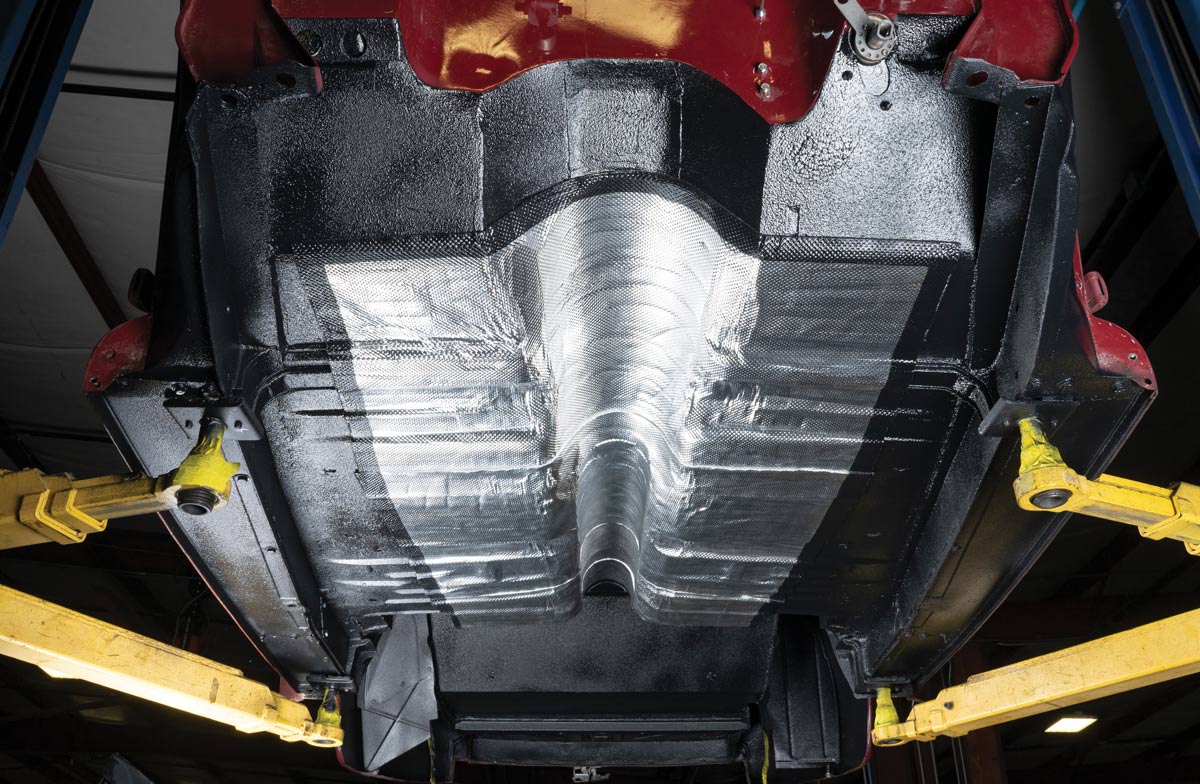
18. Insulation is an important part of a comfortable street rod, and you’ll notice the shielding used on the floor section and transmission tunnel. This keeps the floor from getting hot because of engine, transmission, and exhaust.
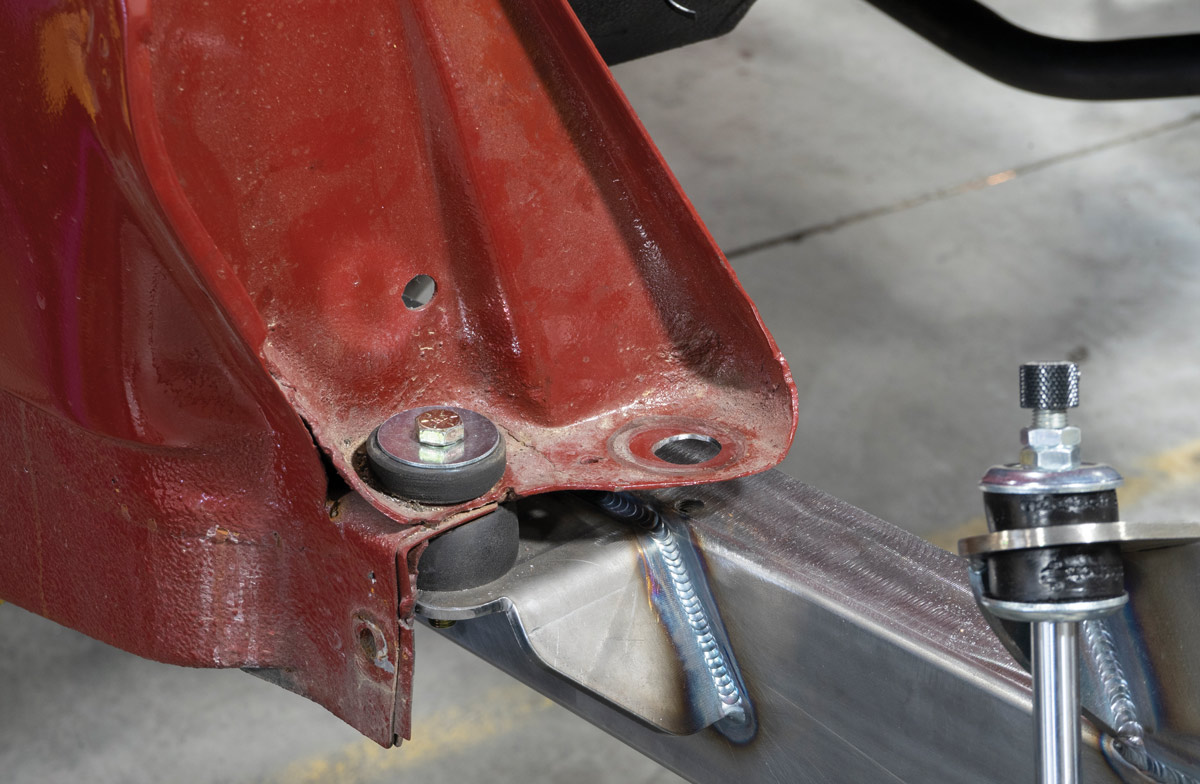
19. All Scott’s Hotrods chassis systems come with body mounts welded into place. This makes it easy to bolt your existing body into place. Body bushings and Grade 8 hardware are used to mount the body to the frame.
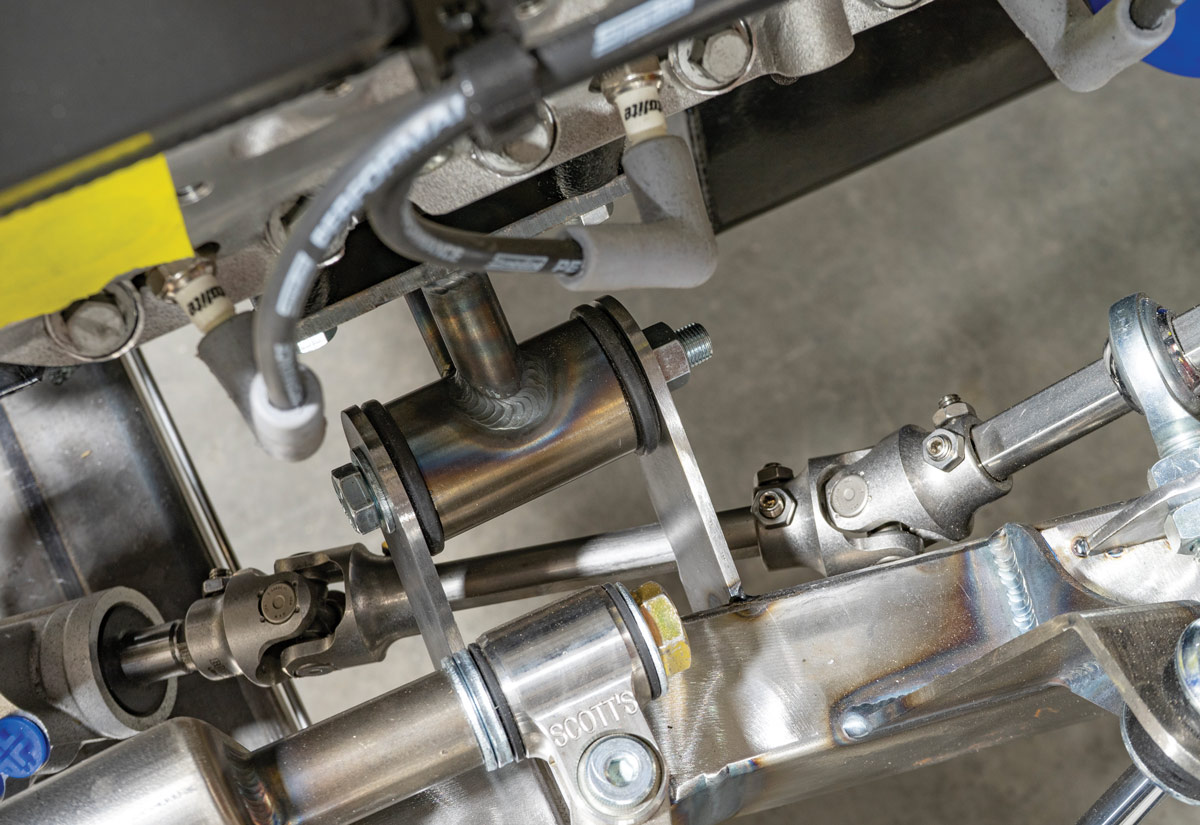
20. With the body mounted to the chassis for the final time, the steering system can be finalized and connected to the steering column.
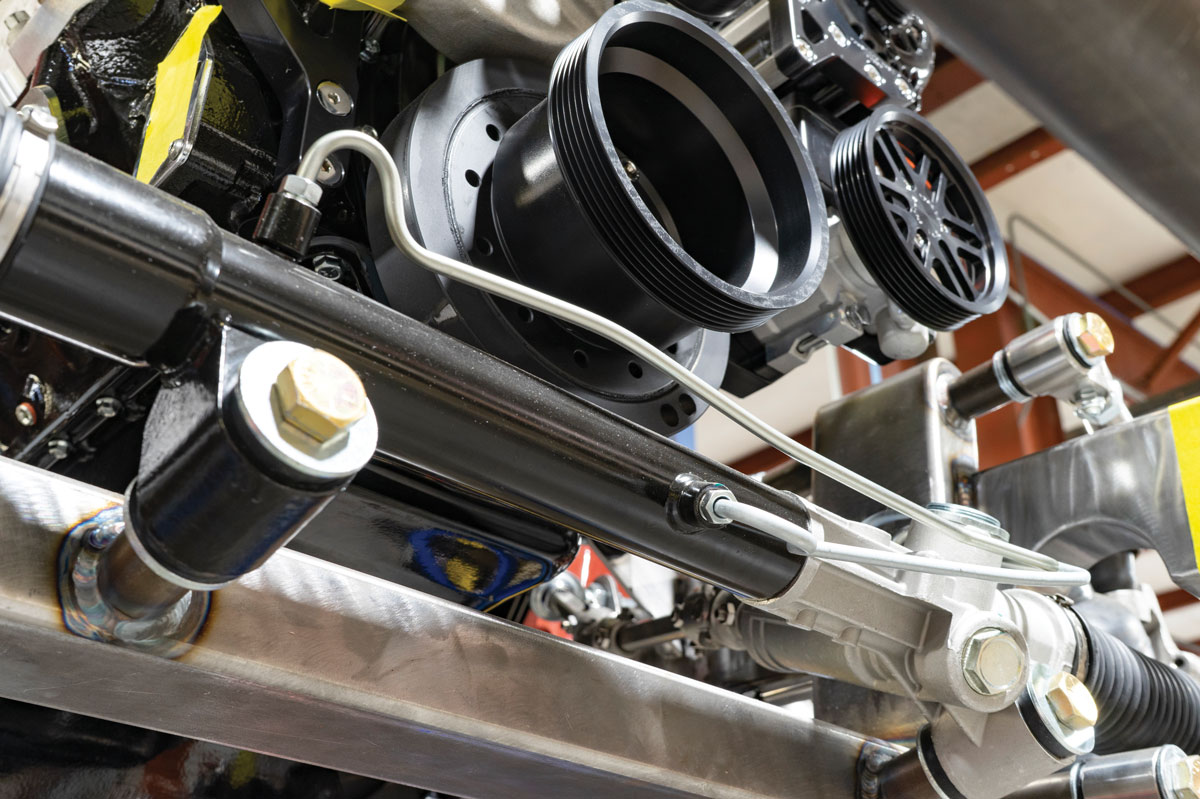
21. Scott’s Hotrods builds its chassis systems with rack-and-pinion steering to provide quick steering ratios and a compact design. At this point, the hard lines can be plumbed to the power steering pump.
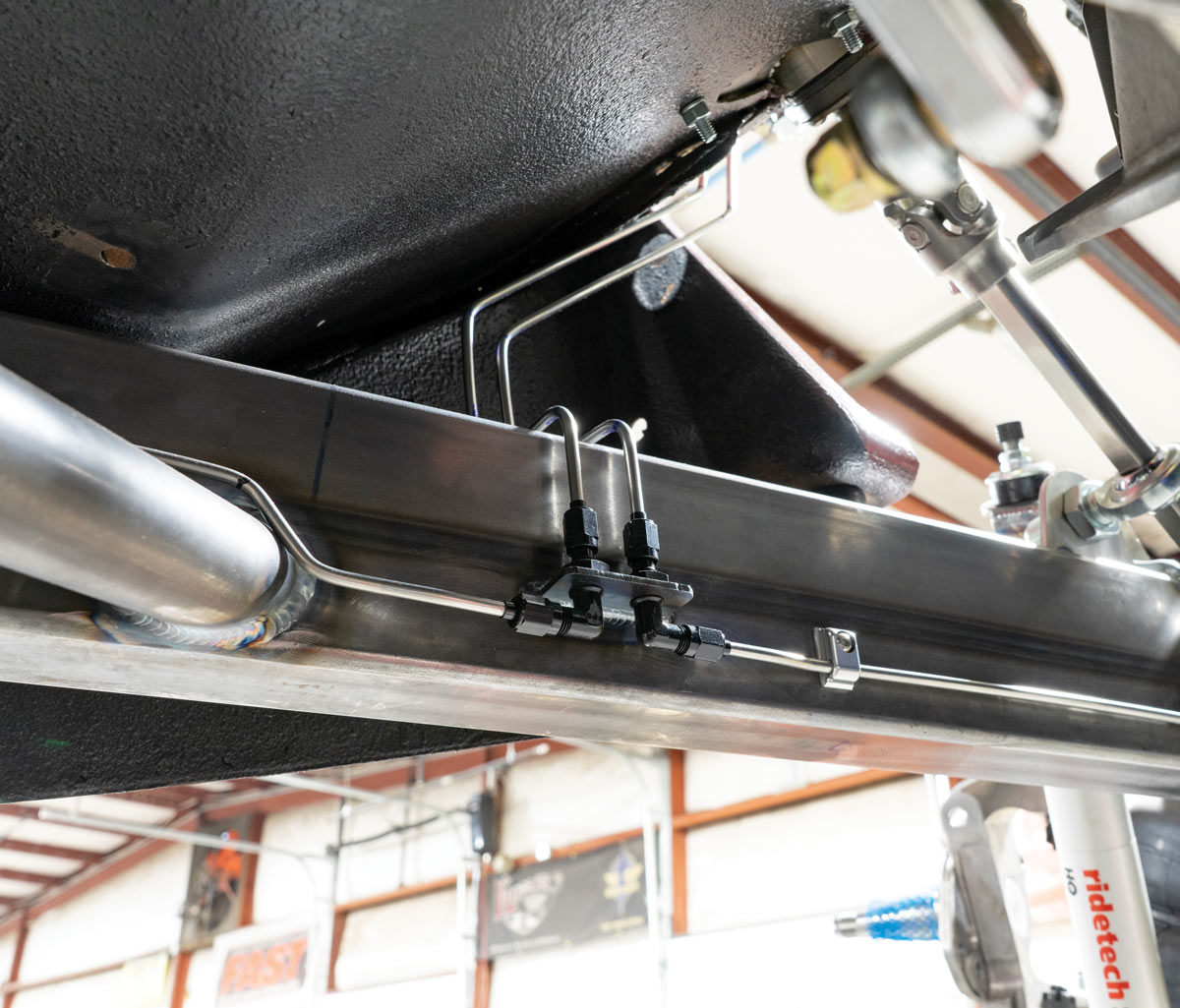
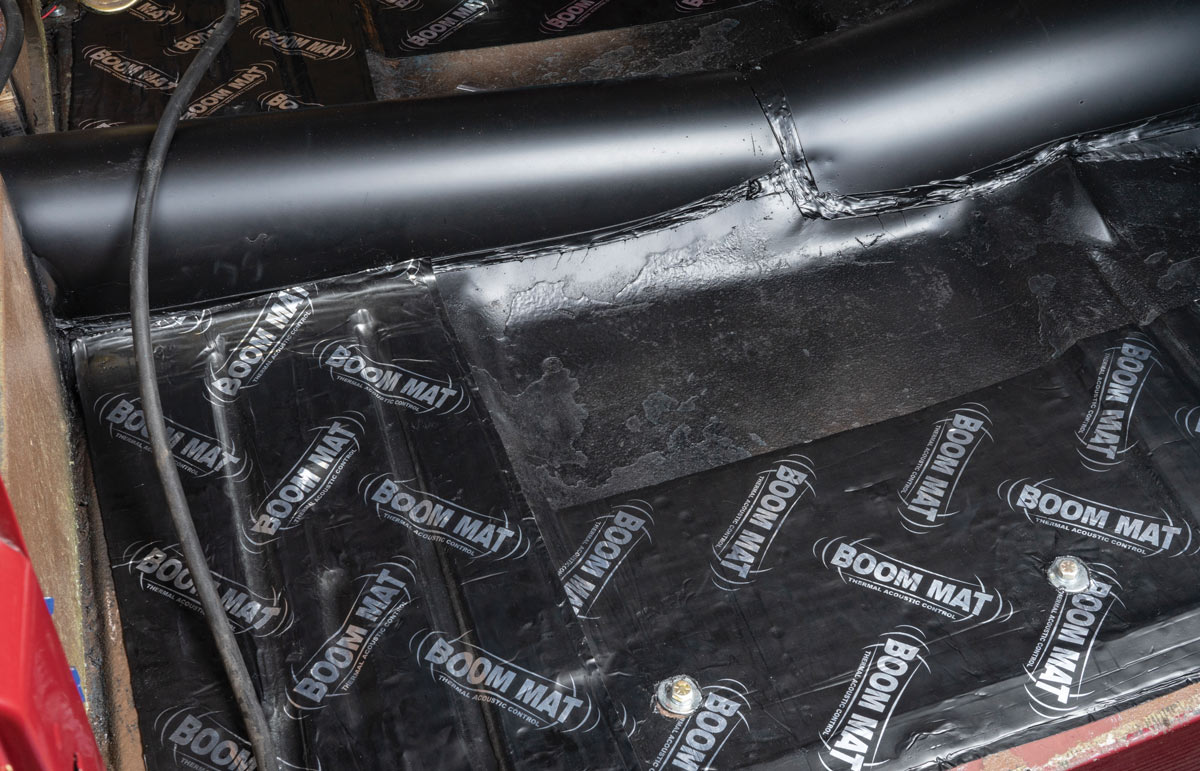
23. On the top side of the floorpans, Boom Mat is used to insulate the driver’s compartment from heat and noise.
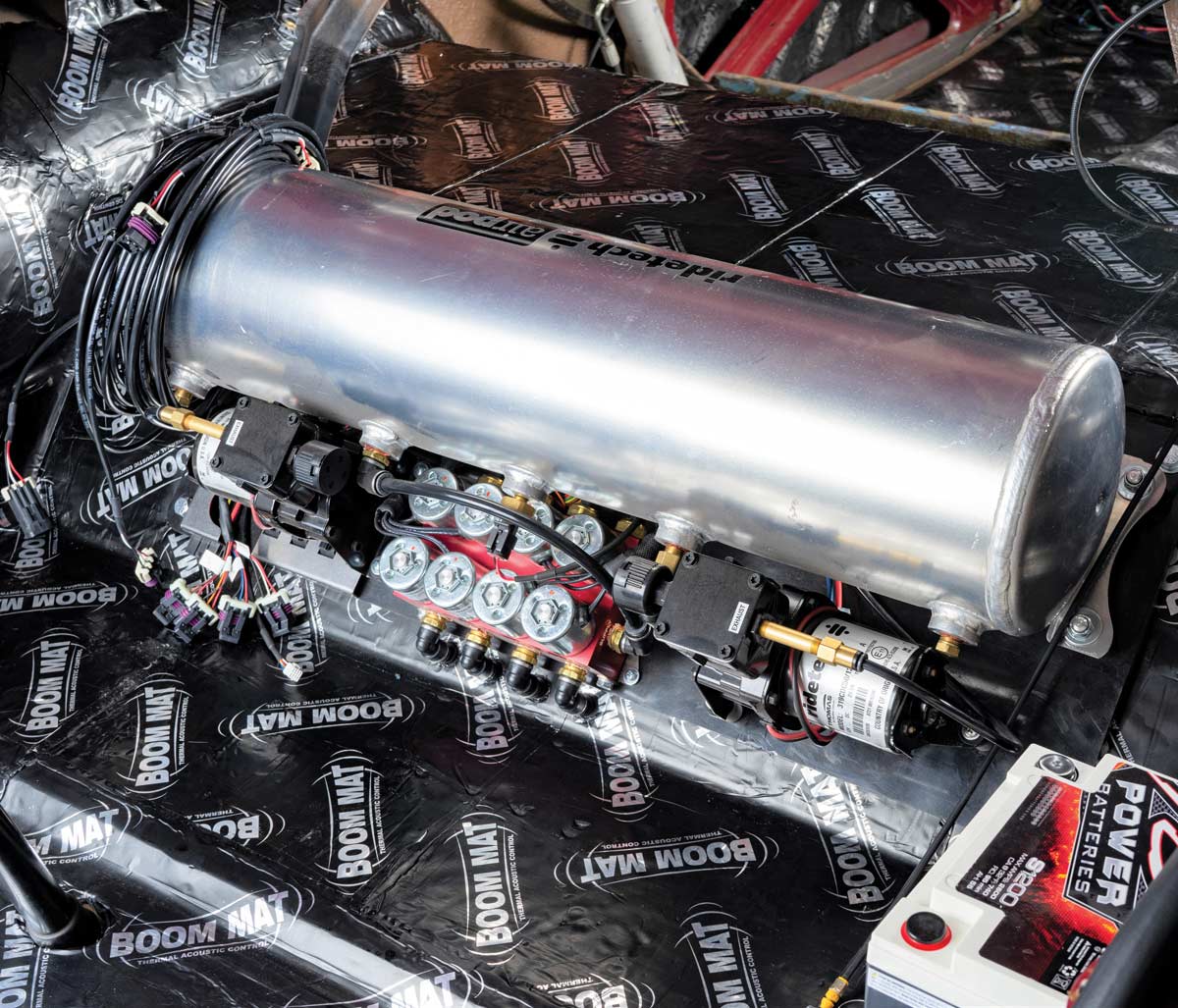
24. Out back, the Ridetech AirPod system is mounted to the rear floorpan kickup. This system is compact and efficient and feeds the four-corner air suspension, which allows for a slammed stance.
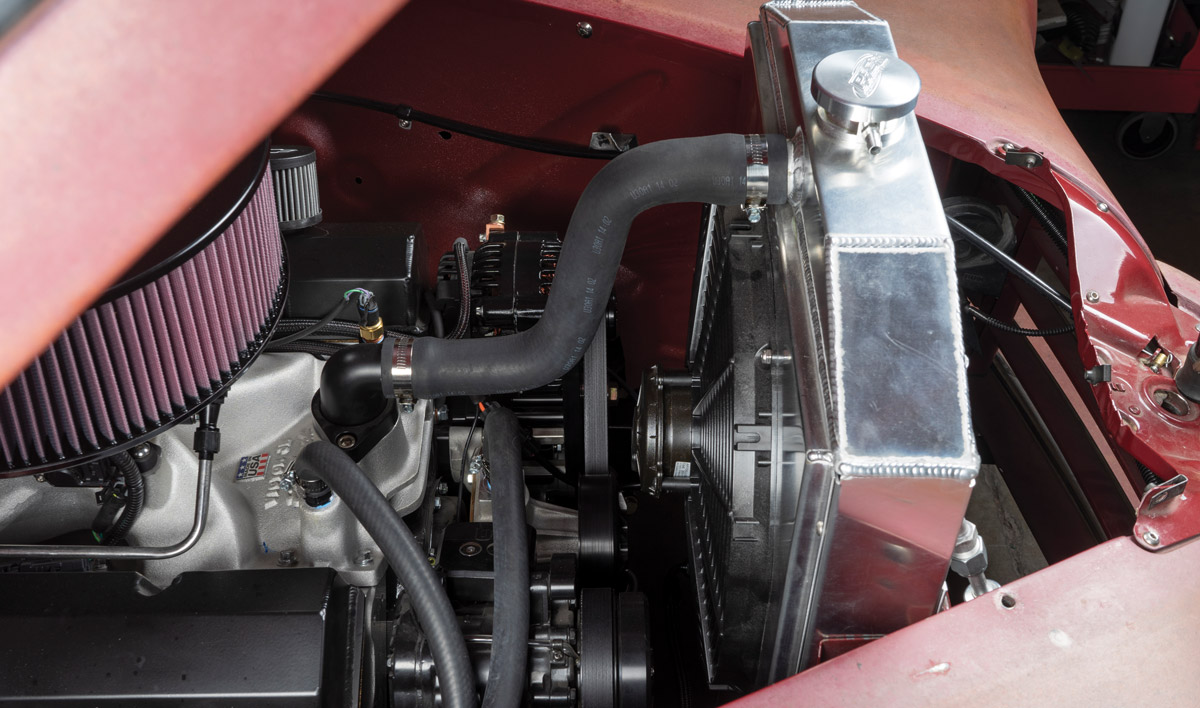
25. Final steps in the frame swap include mounting and plumbing the cooling system, which consists of a PRC aluminum radiator and electric fan.
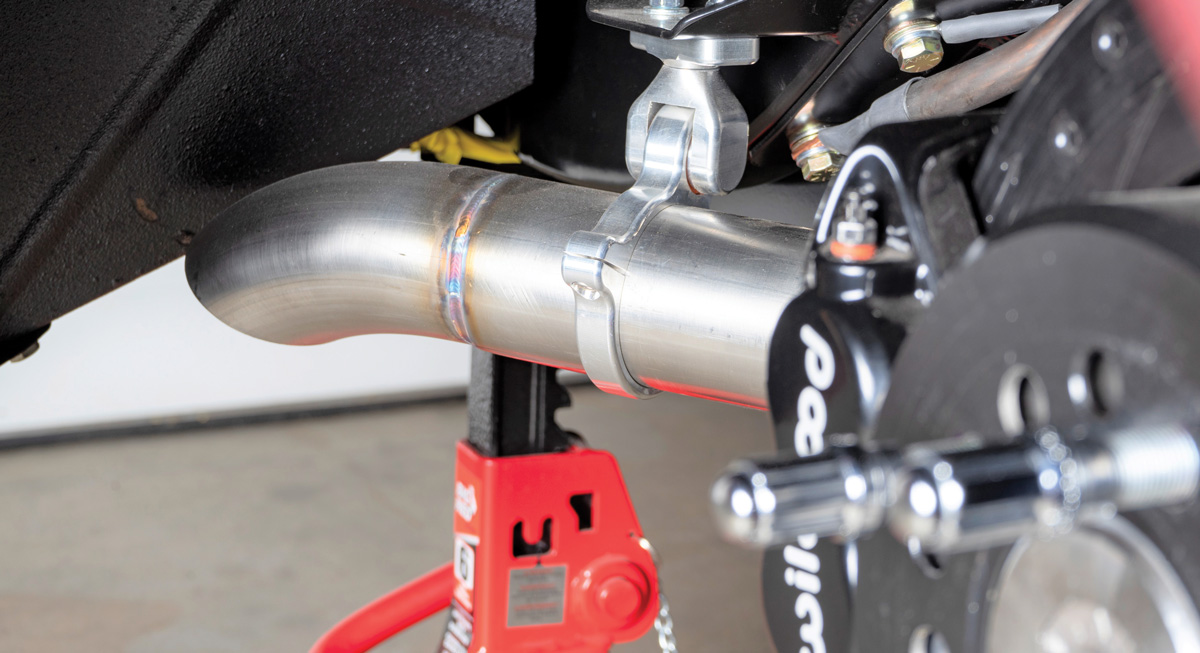
26. Exhaust mounting brackets are also an integral part of the Scott’s Hotrods chassis. Check out those custom aluminum clamps and mounts—pretty trick stuff for this postwar Ford.
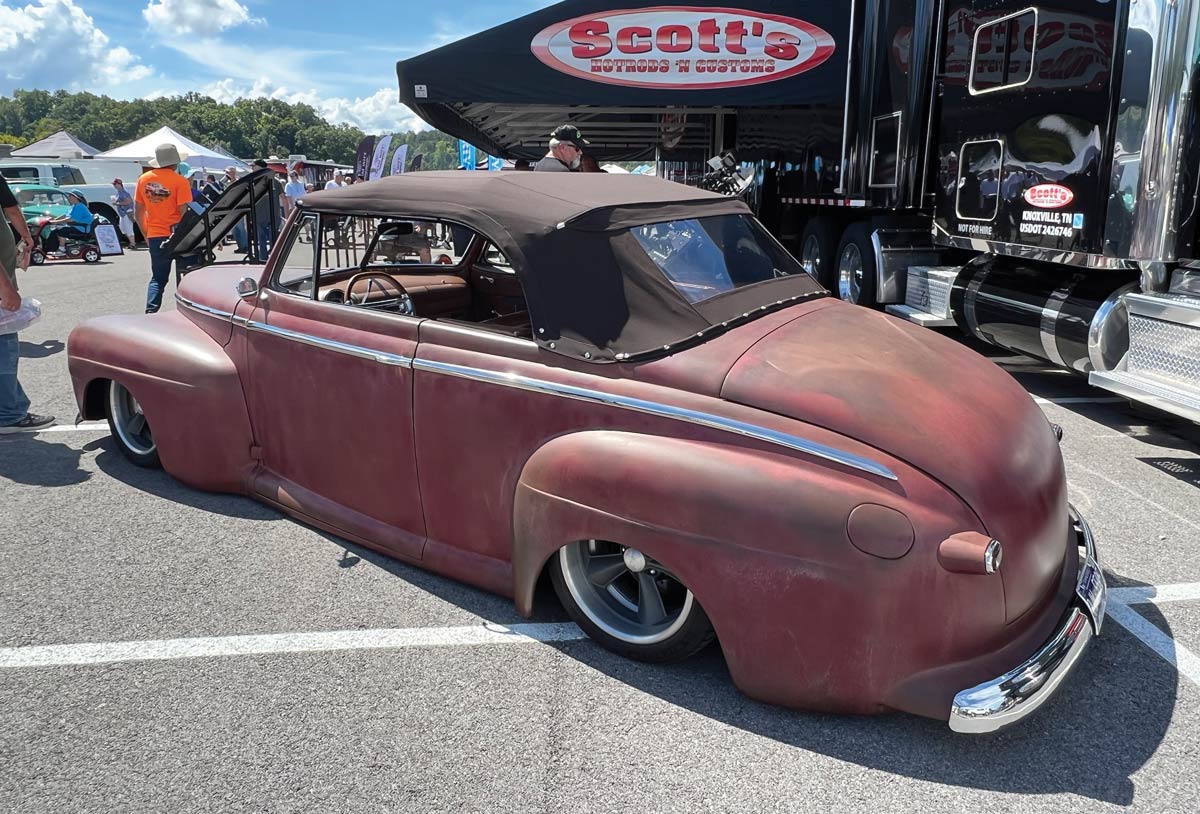
27. The ’47 Ford convertible has cool patina and a crazy-low stance thanks to the Scott’s Hotrods chassis. The Ridetech system puts the Ford close to the earth, while the suspension geometry allows excellent ride quality no matter the ride height.

28. Options are plentiful with Scott’s Hotrods ’N Customs. You can configure the suspension however you’d like it, but the slammed stance sure looks cool. Now, this ’47 Ford is ready to hit the road with Ridetech suspension, Wilwood brakes, and big-time horsepower underhood.
 SOURCE
SOURCEVOLUME 3 • ISSUE 27 • 2022